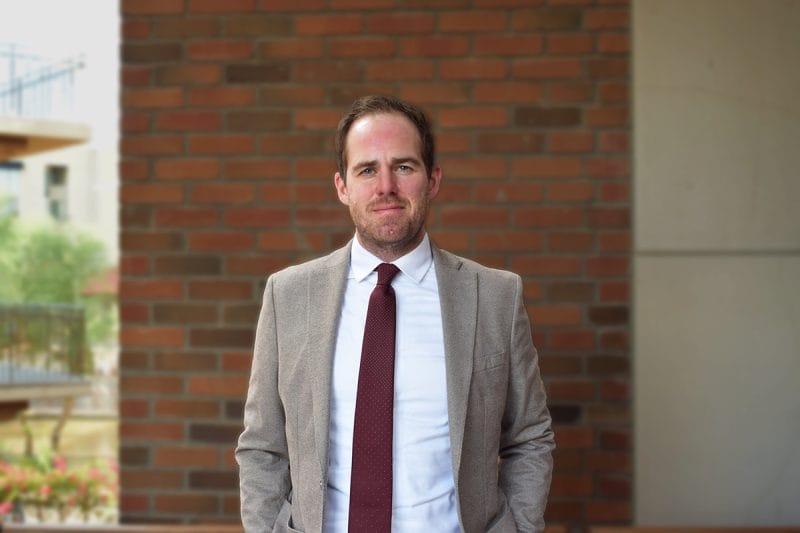
By Rodney Haas | Casa Grande Dispatch
When Freddy Vidal arrived on Central Arizona College’s Signal Peak Campus, he was interested in attaining a certificate in welding.
But as he was getting more information on the welding program, he was informed of another program that led him in a different direction.
That was the college’s renewable energy program, which is funded through a U.S. Labor Department Community Based Job Training Grant. The grant gives students an opportunity to earn certificates in either solar photovoltaics or biofuels.
“I talked to my brother-in-law, who is an engineer, and he told me, ‘If I were you right now, I’d jump on it. Right now that’s what’s moving forward. You can’t go wrong,’” Vidal said.
CAC was awarded the grant in 2010 and classes began shortly thereafter.
The grant pays for the students’ tuition, books and supplies.
The grant, which was in excess of $2 million, was designated for three years but was extended an additional year and is set to expire June 30.
According to Alma Farrell, program coordinator II for the Community Based Job Training Grant at CAC, the grant can’t be extended again as it was a one-time award to help with the set-up and the sustainability to continue the program.
However, Farrell did say there is a push to continue the program, although it is in the planning stages and is currently going through the college’s administration.
“Nobody knows anything of what the budget is next year and what is going to happen,” Farrell said. “Until that is released and those decisions are made, we just don’t know at this point. But there is a desire to sustain the program at CAC.”
The program hopes to get one set of classes in over the first summer session before the grant money runs out. After that, the program will fall in line with other pro- grams where students will have to pay for the classes.
It’s a prospect that Vidal, who has been working with the Arizona Department of Corrections for the past 23 years, said he doesn’t mind.
“I’ll figure out a way to still continue to go to school,” he said. “If I have to pay for my tuition, then that’s fine.”
Vidal, 46, will end up taking three courses in solar photovoltaics. At the end of them,
he will be able to set up a solar system using either the current electric grid, where the excess solar power is sold back to the electric company, or a self-sustaining system where a house in the mountains could be powered by solar energy during the day and then run off batteries at night before recharging with solar power.
The courses, according to Greg Berglund, professor of solar photovoltaics, are designed to get students ready to be a system designer or a technician and to be able to get them a foot in the door in the solar industry.
Berglund added that students are asked to register with the Arizona Department of Economic Security, which keeps statistics on how many former students find jobs within the industry and to see if the program has been a success.
According to Farrell, the program has been successful.
“There were 13 objectives and we are close to meeting all but one or two at this point,” she said.
In the past five years there has been a big push for solar energy.
Berglund said this is due to a combina- tion of factors including the manufacturing of solar modules in other countries that has driven down the price.
“Part of it is the reduction in manufactur- ing costs, part of it is the people are more aware of the potential and they have been putting it on because of the credits,” Ber- glund said.
Although solar energy has been around for a while, but the efficiency hasn’t always been there. Berglund said an average cost per watt for a system has gone from $8 or $9 down to about $6.
“That’s a good amount of decrease for the amount per installed wait,” Berglund said. “If that continues to happen then, yeah, you would see more and more (solar panels). As the efficiency of the modules goes up and the more manufacturers come in and you
get more efficient processors, the price will continue to drop. You will still have install- ers and the labor to install but the price of the equipment will go down.”
As prices drop and solar energy becomes more economical, Arizona is expected to become a big player with the state’s 350- plus days of sunshine. But while the abun- dant amount of sunshine is good for the state, what comes with the sunshine during the summer months could prove to be a challenge.
“You have to account for the cell tem- perature or the modular temp and as the heat goes up, the efficiency drops a good amount,” Berglund said.
But despite the challenges facing Arizona from the heat, Vidal envisions a day when solar panels are everywhere in schools plus major store parking lots.
It’s also an industry that Vidal’s classmate, John Heavern, who moved to Arizona a couple of years ago after working in the audio-visual field, sees as an opportunity for a second career.
“I felt like I wanted to do something in the technology field, something that I wanted to make a difference in,” Heavern said. “I just want to get my foot in the door of the solar industry in general, whether that be as an installer or whatever other entry- level job there is.







